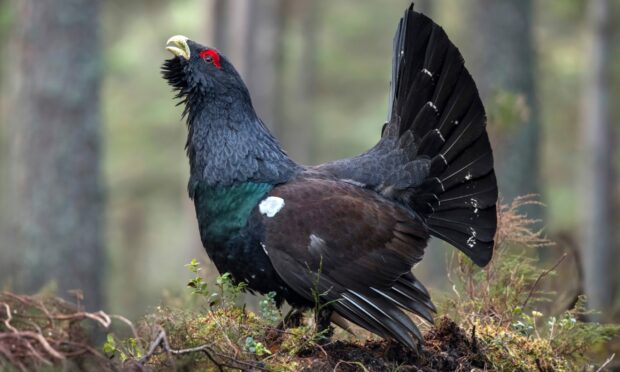A range of measures to help capercaillie prosper have been approved by the Cairngorms National Park Authority (CNPA).
It follows the publication of a scientific report earlier this year, which said urgent action was required if the species are to survive.
There are believed to be fewer than 1,000 capercaillie left in the wild in Scotland, with more accurate population figures set to be released later this year.
Support capercaillie
National park board members were asked to consider a range of options to support capercaillie and to advise on the CNPA’s key priorities for action, taking account of NatureScot’s scientific advisory committee report and the CNPA-led Cairngorms Capercaillie Project.
The options presented to members included:
- Looking at new ways of preventing disturbance to capercaillie by human activity.
- Possible expansion of diversionary feeding of predators.
- Enhanced predator management and consideration of measures to remove protected species from core capercaillie areas, along with fence marking and removal.
Capercaillie conservation
The CNPA has been supporting land managers involved in capercaillie conservation since the publication of the capercaillie framework in 2015, as well as taking forward the strategic coordination of conservation efforts.
In 2018, working with a wide range of partners, the authority was successful in the development and subsequent delivery of the National Lottery funded Cairngorms Capercaillie Project.
This puts people at the heart of capercaillie conservation in order to find sustainable solutions to the issue of human disturbance and other causes of population decline.
‘Capercaillie are a key species’
CNPA board convener, Xander McDade said: “Given the current rate of decline, I firmly believe that there is a need for action that will achieve quick results. As such, we need to act swiftly and decisively, which is why I am happy to support the recommendations set out in the board paper.
“Capercaillie are a key species in the Cairngorms National Park and it is therefore extremely important that the park authority should focus on the areas of work that will have the most impact.
“It would be catastrophic if we were to lose capercaillie from our native woodlands, so as an organisation, let’s make sure we are championing the areas of work outlined.”

Conversation